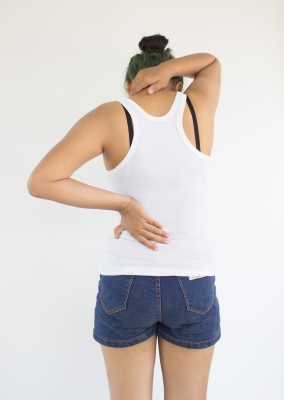 Gout Diet
Gout Diet 從每年的十月『國際骨骼關節月』講起 -- 骨骼健康
從每年的十月『國際骨骼關節月』講起 -- 骨骼健康 
Bones make up the framework of our bodies. Bones and joints are great team players as they all work together to help us move around. However, most of us do not look after them and just let them work until one day when we have back pain – a signal that something goes wrong with our bones and joints.
The tissues and organs of our bodies would degenerate after the age of 30 and start ageing after the age of 50. In particular, some bones and joints may deteriorate faster as a result of repetitive stress and strain in everyday life, causing different levels of pain and discomfort.
For those working long hours at a desk in hunched-over typing positions, their chances of getting bone or joint disorders are indeed comparable to those labouring outdoors. If you are stepping into your sixties, you should take good care of your bones and joints which play a key role in your daily activities, thus contributing to the well-being of yourself in the coming years of retirement.
This page sets out the bone and joint problems commonly found among those beyond the age of 50 to enable early prevention as well as timely care and treatment. Links to relevant websites are also provided to facilitate access to further useful information.
The more common bone and joint problems include:
|
Back pain is a common ailment; almost every person has experienced back pain at least once in a lifetime. The causes of back pain can basically be grouped under two categories: muscle strain and improper posture.
Since the back bears most part of the body weight, it can be injured easily. Repetitive movement, remaining in the same posture for long periods or abrupt movement, no matter properly done or not, would likely overstretch or compress muscles, ligaments or joints, and give rise to muscle strain.
Improper posture would compress the ligaments and other soft tissues surrounding the joints. This would lead to back pain and may even change the natural curve of the waist and the backbone. In short, improper posture would exert huge pressure on the waist and result in early degeneration of the backbone.
The most common back problems include the following:
Daily care of the back
Proper posture can enhance the effectiveness of limbs movement and can protect the body from injuries. On the contrary, prolonged improper posture would easily cause back pain or joints degeneration, hence weakening the strength of deep muscles and reducing the sensation capabilities of the body. Generally speaking, posture can be classified into sleeping, sitting and standing postures.
Points to note in daily life
Causes for back injuries
|
|
High-risk groups for osteoporosis include women over 45/postmenopausal women, as well as those with low calcium intake, little physical exercise, poor exposure to sunlight, heavy drinking and smoking on a prolonged basis. Early prevention and regular check-ups can help protect against osteoporosis.
Relevant websites and articles:
|
 Frozen shoulder is caused by inflammation of the soft tissue around the shoulder joint. It is more common in people aged over 50. In the early stage, shoulder pain develops gradually. The pain usually becomes more obvious at night that interferes with sleep, or the patient may feel painful when sleeping on the affected side. As pain lessens, the shoulder joint becomes stiff and the range of movement decreases. Hence, daily activities may become difficult to the patient. Relevant websites and articles: |
|
Osteoarthritis (also known as degenerative arthritis) is one of the common diseases among the “green age” group. As part of the ageing process, joint fluid decreases.
With wear and tear, the knee cartilage is getting thinner. It would be worse if the muscles and tendon protecting the knee joint become weakened, or if there is a problem of overweight or poor posture and movement patterns.
The most usual symptom is pain or discomfort especially after walking, e.g. walking downstairs, and carrying heavy load. Occasionally there may be redness, swelling and warmth. Chronic problems include stiffness and deformity.
Other articles: Relevant websites and articles:
|
|
Hip fracture is a serious injury and potentially debilitating. Most people who suffer a hip fracture are at the age over 65. It is one of the top injuries in the elderly population.
Some patients would thus require assistance in their daily activities or be in need of specialized care, such as a long-term nursing home.
All those who have had a hip fracture need to use walking aids for at least a few months, and nearly half of them will permanently rely on canes or walkers to move around.
Relevant websites and articles:
|
Feature article
Relevant website |